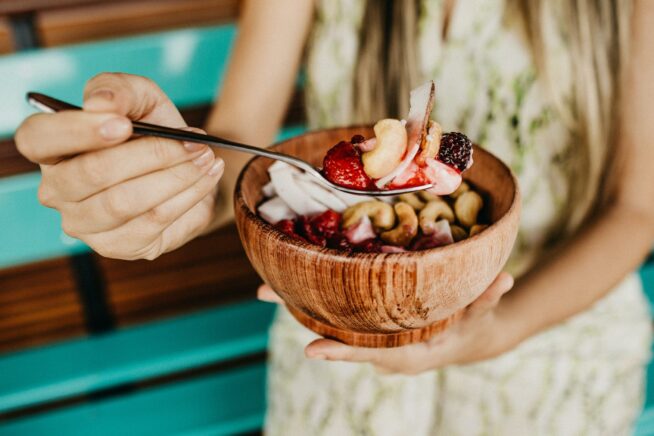The foods you choose play a substantial role in your overall health. This rule applies to your physical and mental self.
Fortunately, you don’t have to give up your favorite recipes to get healthier. You can eat nearly anything you enjoy but up the nutritional value by making a few substitutions.
Here are five kitchen ingredient swaps I made to cook healthier meals and improve my mood.
1. Healthier Cooking Oils
When vegetable oils such as canola flooded the market, they were billed as healthier alternatives to saturated fats. Many do have heart-health benefits, but recent research casts a few aspersions on how many of these oils we consume. Some researchers believe that the excessive amounts of omega-6 fatty acids these oils contain might upset the balance of omega-3s to omega-6s in the human body, leading to health issues.
Furthermore, many vegetable oils contain allergens that can cause severe reactions in some. For example, soy is one of the big eight food allergens found in many oils. While some manufacturers go the extra mile to remove any proteins that might spark a reaction, many do not.
What do I use? My standbys are olive and avocado oil, both of which come in organic, expeller-pressed form. Olive oil has a longstanding reputation for boosting cardiovascular health. It’s rich in oleic acid, carotenoids and other antioxidants that improve your heart and even your skin’s luster. Plus, it has a high smoke point, making it safe for most preparation methods, including pan-frying.
Avocado oil has an even higher smoke point, making it ideal for baking. I substitute it for the generic “vegetable oil” when making a mix. I’ll also often use coconut oil to replace butter. It’s a vegan alternative rich in medium-chain triglycerides (MCTs), which doesn’t increase cardiovascular risks like the stuff made from cow’s milk can.
2. Limiting All-Purpose Flour
There are so many glorious flour alternatives on the market today. If you heed only one tip from this list, make it this one.
All-purpose white flour goes through extensive processing in which manufacturers remove the bran and chaff, the most nutritious parts of the grain, leaving empty calories. That’s not the only trouble with this ingredient, though.
The manufacturing process also creates a chemical byproduct called alloxan. Scientists use this substance to induce diabetes in laboratory animals. When you mix rapidly absorbing empty calories with this ingredient, you have the perfect recipe for the Type 2 form of this disease.
Fortunately, you can find various substitutions with fabulous health benefits. Almond flour is a good source of vegan protein, as is chickpea or garbanzo bean flour. You can even find protein-rich cricket flour at specialty stores — although it’s not vegan. You can also find flours made from ancient grains like quinoa and amaranth, safe for many people with gluten sensitivities.
3. Sugar Substitutes
Sugar is technically plant-based, but that doesn’t mean it won’t increase your health risks. Too much of the sweet stuff causes your blood glucose to fluctuate, causing anything from nausea to headaches to excess hunger and cravings that drive you to overeat.
Fortunately, it’s a snap to find healthier alternatives that don’t ride rickshaw over your glycemic index. Monk fruit sweetener comes in both liquid and powdered form — the latter comes in formulations that you can measure scoop for scoop as a substitute for sugar in recipes. Stevia is another healthy alternative, although you’ll have to experiment a bit to find the right balance when baking.
4. Meat-Free Monday Plus
If you follow a vegetarian or vegan diet, you can rejoice in the wide variety of substitute meats available on the market today. Anything that reduces global carbon emissions is good, but not all replacements for beef and chicken are created equal. Some contain additives and fillers that have questionable effects on your health.
However, it’s a snap to find delicious recipes so hearty that you won’t miss the cow. My family loves these smoky hemp seed and black bean burgers. They’re also a hit at barbecues because they’re vegan and gluten-free, taking care of two dietary restrictions in one fell swoop.
5. More Tempting Salad Toppers
Here’s a kitchen ingredient swap that requires no culinary expertise. If you’re still using white bread croutons to give your salad crunch, you can up your nutritional intake significantly by replacing them with nuts and seeds. These foods are high in magnesium, selenium and zinc, which are vital to healthy neurological function.
Magnesium works so well at making you feel better that it performed equivalent to a tricyclic antidepressant in one study. Many Americans are deficient in this mineral. If you’ve been feeling blue lately, try this swap — it might be just what you need to return the smile to your face.
Making Some Swaps to Cook Healthier Meals and Improve Your Mood
You don’t have to give up the recipes you and your family adore to increase your nutritional intake. Make the kitchen ingredient swaps above to cook healthier meals and improve your mood.

Mia Barnes is a health and wellness journalist with a focus on mental health and chronic pain issues. She is the Editor in Chief at Body+Mind.
Image courtesy of Jonathan Borba.












